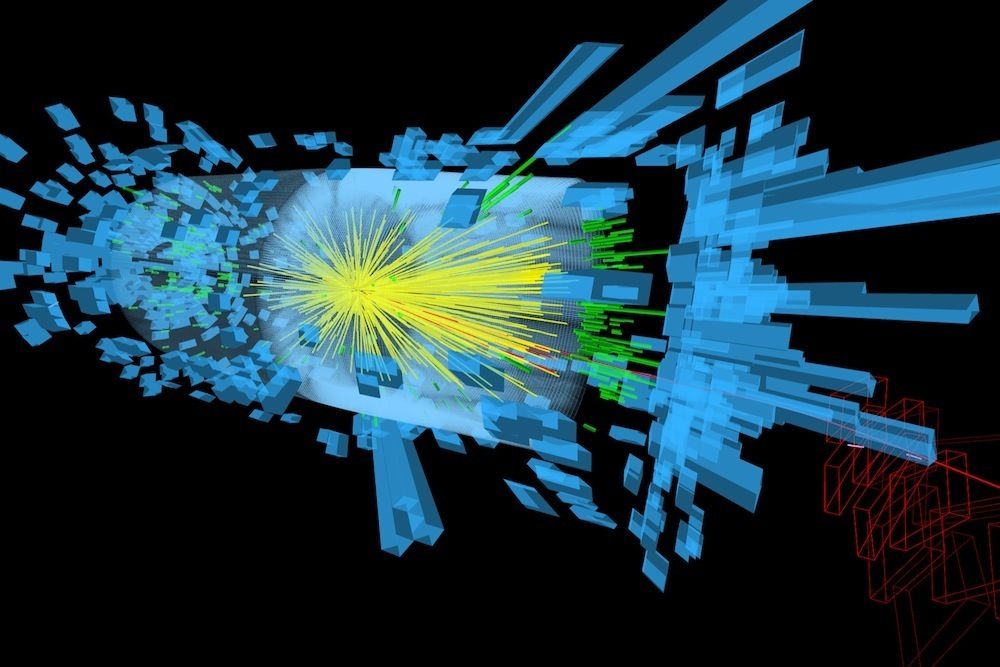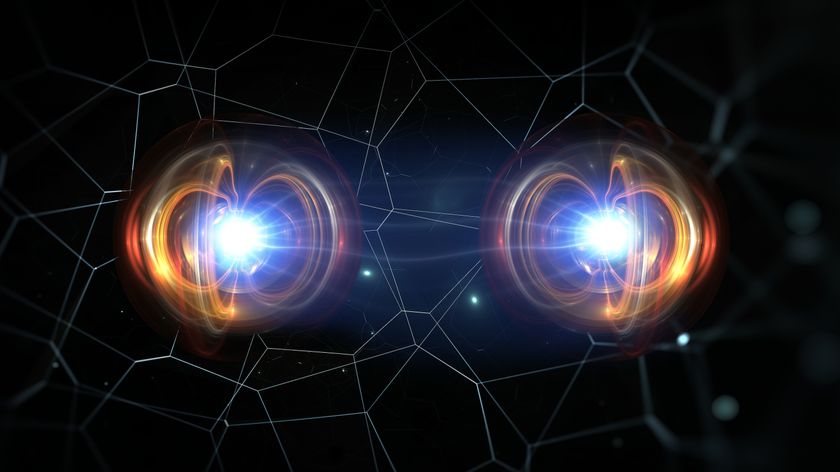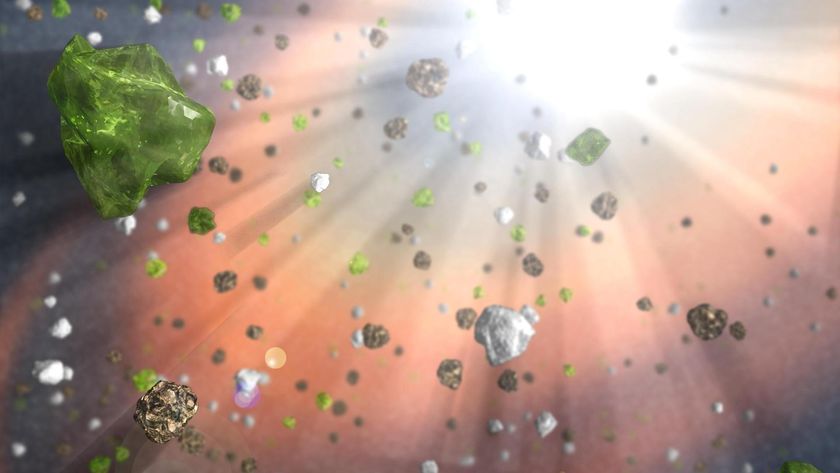Next Higgs? Atom Smasher Probes Highest Energies Yet

Scientists at the world's largest atom smasher have made a precise tally of the jumbled cascade of particles produced when two proton beams are smashed together. The results could help researchers discover new types of particles, akin to the now-famous Higgs boson.
Researchers at the Large Hadron Collider (LHC) in Switzerland sent two beams of protons hurtling in opposite directions and crashed them together at the highest energy level yet achieved at the LHC. The research is part of the CMS experiment, which stands for Compact MuonSolenoid. For each of the 150,000 proton-proton collisions the researchers identified, about 22 charged particles (hadrons) were produced.
The scientists wanted to create a snapshot of a "typical" collision between two proton beams, which could help the researchers sift through background noise for signs of new effects. Previous models to make predictions for detecting new particles rely on estimates with an uncertainty of 30 to 40 percent, which could be problematic for detecting rare particles, the researchers said. [Beyond Higgs: 5 Elusive Particles That May Lurk in the Universe]
To get a precise count of the number of particles produced in an average proton collision, the team analyzed data with the LHC's magnet turned off. This meant the scientists could accurately count the number of charged particles, because they arrive at the CMS detector itself rather bending from the magnetic field and ending up in the main collider's beam pipe, Yen-Jie Lee, an assistant professor of physics at the Massachusetts Institute of Technology and one of the study's lead researchers, said in a statement.
The LHC is an underground ring measuring about 16 miles (27 kilometers) in circumference. It accelerates particles to nearly the speed of light using powerful magnets. The CMS experiment is one of a handful of detectors built into the LHC machine.
The energy intensity at the atom smasher has increased by 60 percent — from about 7 teraelectronvolts (TeV) to 13 TeV — since its first run, which lasted from 2010 to 2013. This is still a tiny amount of energy; 1 TeV is about the energy of motion of a flying mosquito. Within a proton though, this is squeezed into a space about a million, million times smaller than a mosquito, according to the European Organization for Nuclear Research (CERN), which operates the LHC.
The LHC's energy boost means that 30 percent more particles are produced per collision, the researchers found.
Sign up for the Live Science daily newsletter now
Get the world’s most fascinating discoveries delivered straight to your inbox.
"At this high intensity, we will observe hundreds of millions of collisions each second," Lee said.
The increased energy also gives physicists a better chance of discovering new particles like the Higgs boson, which was first detected in 2012. According to Albert Einstein's equation e = mc2, the higher the energy (e) of the experiment, the higher the mass (m) of the new particles could be.
"We are opening up a new region of these collisions that we have never opened up before," said Daniela Bortoletto, a physicist who was previously involved with the CMS collaboration but now works on ATLAS, a rival experiment at the LHC. "We are really exploring terra incognita!"
The ATLAS group also observes collisions between a set of two proton beams and is in the process of replicating the CMS experiment to count the number of hadrons produced. [Wacky Physics: The Coolest Little Particles in Nature]
Bortoletto said that these measurements are fundamental to physics because they help "get to the diamond in a terrain full of dirt."
"It's part of the mankind desire to understand where we came from," Bortoletto told Live Science. "And we've done really remarkably well in explaining a lot of the phenomena."
Bortoletto says the measurements described in this paper are necessary to discover new particles in the higher energy regime. While she said the theories behind the building blocks of the universe are impressively accurate so far, there is still something missing.
The Standard Model, the reigning theory of particle physics, is based on the idea that all matter is made of particles of two basic types, called quarks and leptons, and the forces that act on them.
However, it is not a flawless design, and there are gaps to fill in. Discovering unknown — and sometimes invisible — particles could help physicists, like Bortoletto, see the bigger picture.
For example, the Standard Model can't explain the existence of gravity. It also fails to account for dark matter, the mysterious stuff that is thought to make up about 85 percent of matter in the universe.
"We have observations coming from the cosmos showing that there is dark matter and also dark energy," Bortoletto said. "The particles that make up the Standard Model explain only about 5 percent of the composition of the universe."
The last rare particle to be discovered in proton collisions was the Higgs boson, which helped confirm the reigning theory of particle physics. The Higgs is thought to explain why other particles have mass, and its existence was predicted by the Standard Model. Now that researchers know what a typical proton collision looks like, the search for other rare particles could become more efficient.
Lee said the new results could also significantly contribute to studies of the early universe, which was extremely dense and hot. The researchers said they now plan to study lead-ion collisions, which produce an extremely dense medium that is thought to mimic the conditions of the universe right after the Big Bang.
"With lead-ion collisions, we can reproduce the early universe in a 'small bang,'" Lee said. "If we can understand what one proton collision looks like, we may be able to get some more insights about what will happen when hundreds of them occur at the same time.
"Then we can see what we can learn about the early universe," he added.
The new results were published online Oct. 8 in the journal Physics Letters B.
Follow Live Science @livescience, Facebook & Google+. Original article on Live Science.












